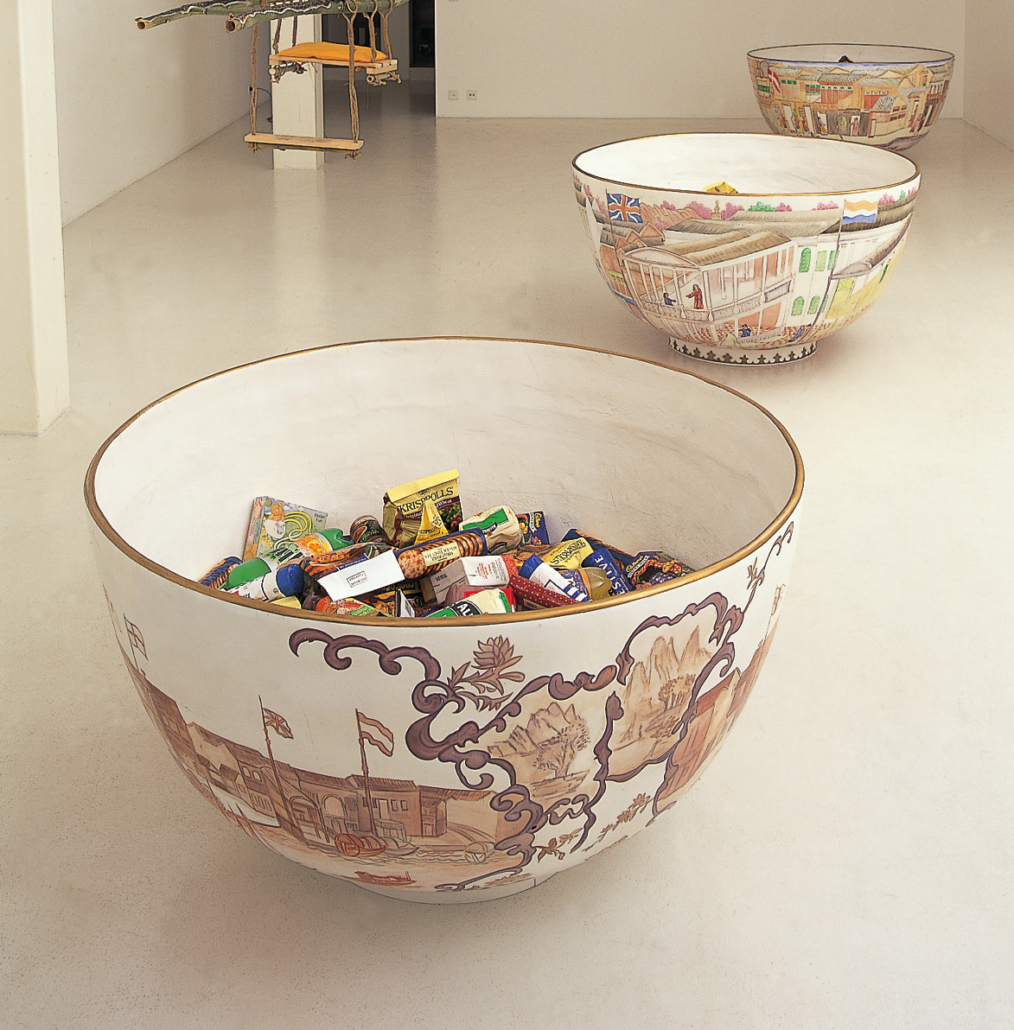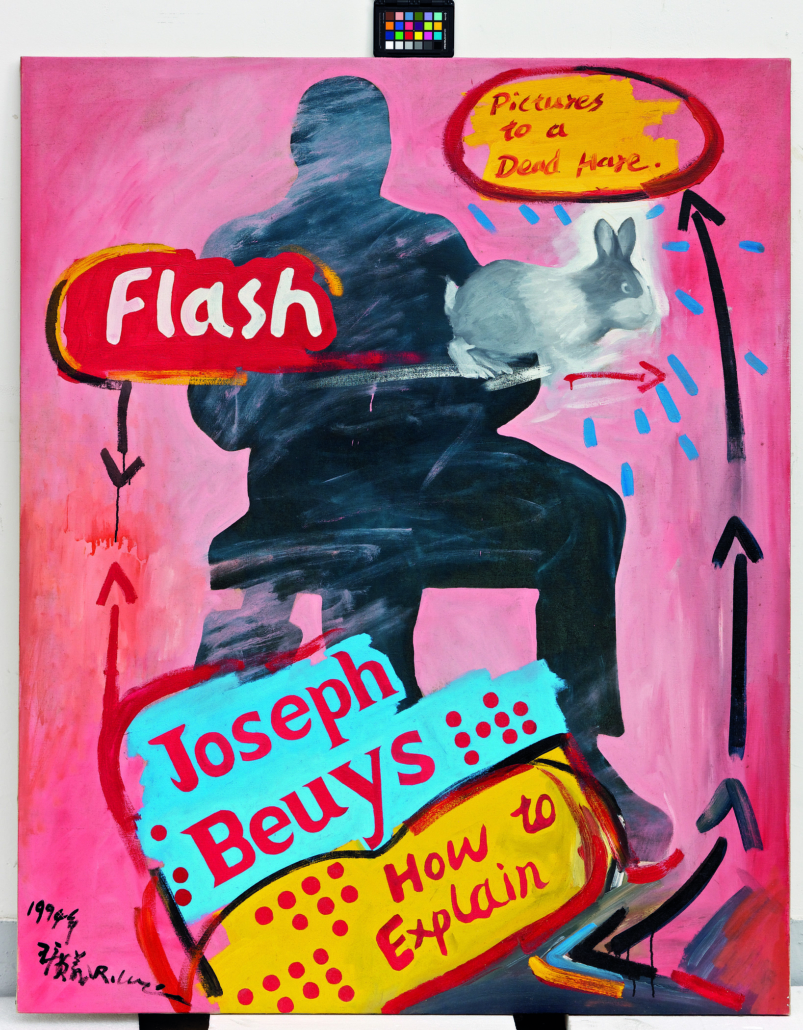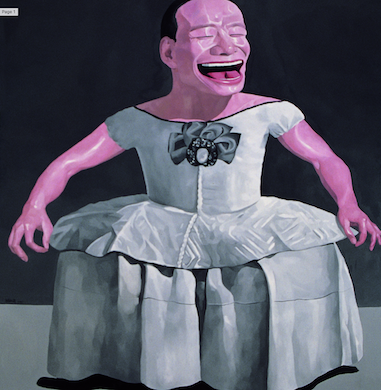
LOS ANGELES— The Los Angeles County Museum of Art (LACMA) presents Legacies of Exchange: Chinese Contemporary Art from the Yuz Foundation. Featuring Ai Weiwei, Huang Yong Ping, Wang Guangyi, Xu Bing, and more, the exhibition brings together 20 works of Chinese contemporary art created by 15 artists in response to international trade, political conflict, and global artistic exchange. Drawn from Yuz Foundation’s esteemed collection of contemporary art, Legacies of Exchange spotlights encounters, exchanges, and collisions between China and the West. This exhibition is part of LACMA’s ongoing collaboration with Yuz Museum in Shanghai, China and Qatar Museums in Doha, a joint effort to create exhibitions and to provide the museums with greater access to a more diverse collection of artworks. The exhibition opened July 4 and continues through March 13, 2022.
“Legacies of Exchange highlights works that relate to cross-cultural exchange, both recent and historical, between China and the West, as a part of our recent collaboration with Yuz Museum,” said Susanna Ferrell, Wynn Resorts Assistant Curator of Chinese Art at LACMA. “As the first Los Angeles-based collaboration between LACMA and Yuz, we are thrilled to present these incredible works from the collection of the Yuz Foundation to Los Angeles for the first time.”

This spring, funds were contributed by the 2021 Collectors Committee to support the conservation of Ai Weiwei’s Circle of Animals/Zodiac Heads. Part of the conservation efforts took place on LACMA’s Smidt Welcome Plaza before being installed in the Resnick Pavilion as part of the exhibition. The installation is made possible by the Long Family Foundation.
The first section of the exhibition focuses on re-creations and re-interpretations of historical European paintings by contemporary Chinese artists. In 1978, following the end of the Cultural Revolution (1966–76), a sociopolitical movement intended to modernize China through the destruction and suppression of tradition, an exhibition of European painting traveled to Beijing and Shanghai. This opened the door to an influx of European and American art publications and exhibitions, which many young Chinese artists saw as foreign and enticing.

New practices developed rapidly in the 1980s and 1990s, and as Chinese artists sampled from their pick of global influences, the trend of subverting classic European paintings emerged. Whether using a new style or medium, replacing a central figure with a signature character, or re-imagining an entire scene, many of the edits made by these artists contribute to a sense of irony in their work. For example, Qiu Anxiong’s The Doubter (2010) replaces the tragic figure in Jacques-Louis David’s The Death of Marat with a robed chimpanzee. Zhou Tiehai combines the iconic cigarette mascot Joe Camel with works by Jean-Auguste-Dominique Ingres, Jacopo Palma, and Peter Paul Rubens. Yue Minjun replaces the central figure in Diego Velazquez’s Las Meninas with his signature pink laughing man.

The second section of the exhibition presents works related to branding and advertisement, mostly of Western companies with a presence in China. China underwent a number of economic reforms to move away from communism and toward capitalism following the end of the Cultural Revolution (1966–76), and in the 1980s, Nike, Coca-Cola, and many other U.S. brands began selling their products in China. As trade regulations were loosened, foreign goods were increasingly imported into the country, bringing on a new era of consumerism and branded culture. These radical shifts inspired many young artists who saw the China they knew rapidly changing.
This section of the exhibition also includes a single gallery dedicated to Xu Bing’s Tobacco Project—The Language of Smoke: 1902. First installed within an old tobacco-processing warehouse in Shanghai, The Language of Smoke is part of Xu Bing’s series Tobacco Project (1999–2011), an examination of the early importation of American tobacco into China and the lasting impact of this now prominent industry. From a nebulous haze within the installation emerge neon characters of a 1902 advertisement, selling British-American tobacco in China. This exhibit represents the first time The Language of Smoke will be installed in the U.S.
Visit the LACMA website and see its dedicated page for Legacies of Exchange: Chinese Contemporary Art from the Yuz Foundation.


